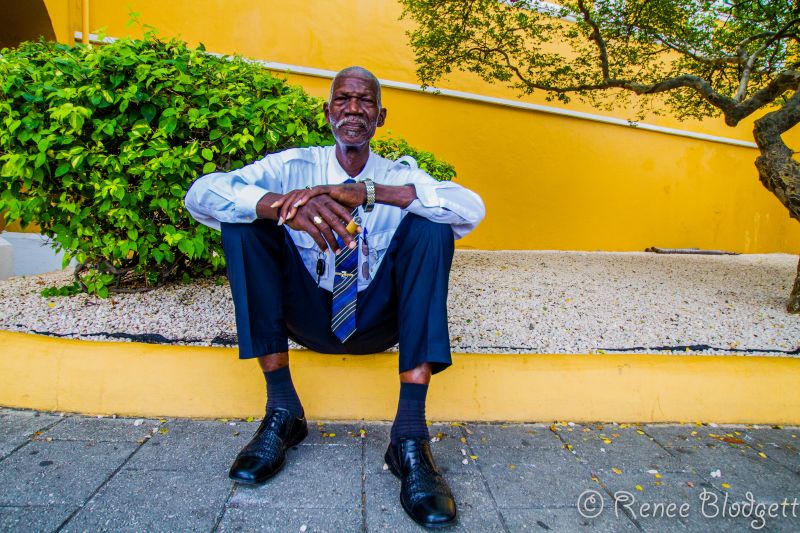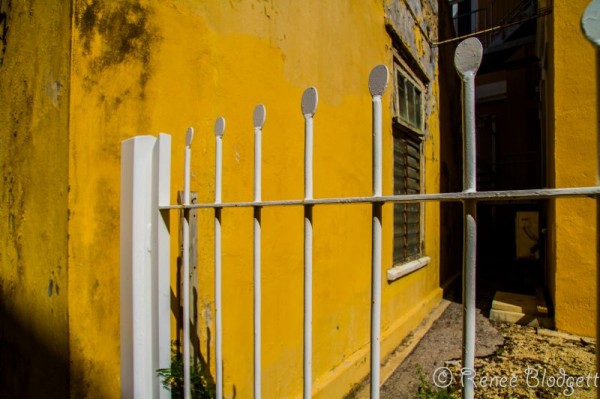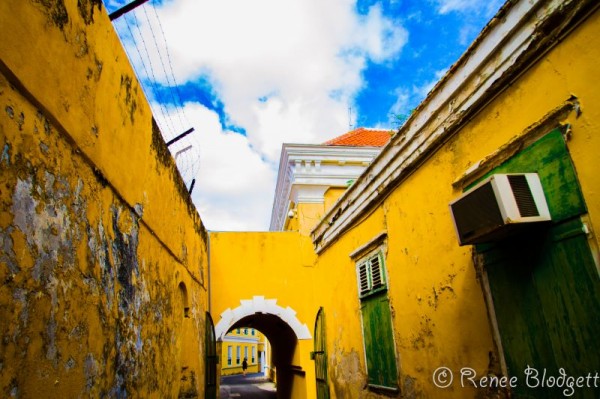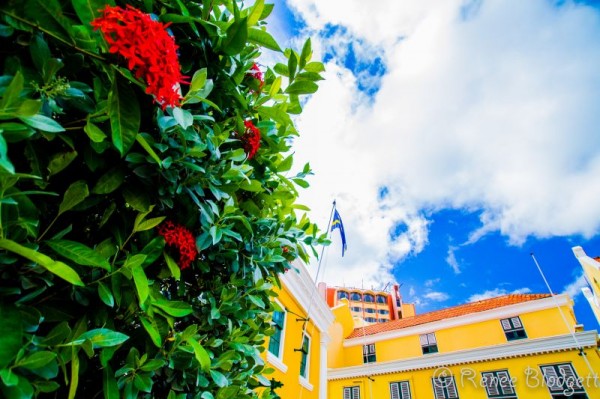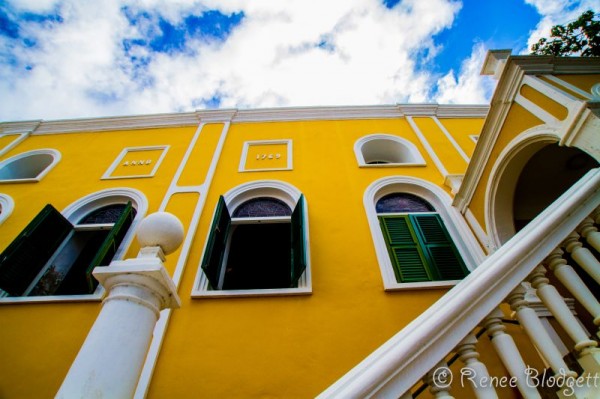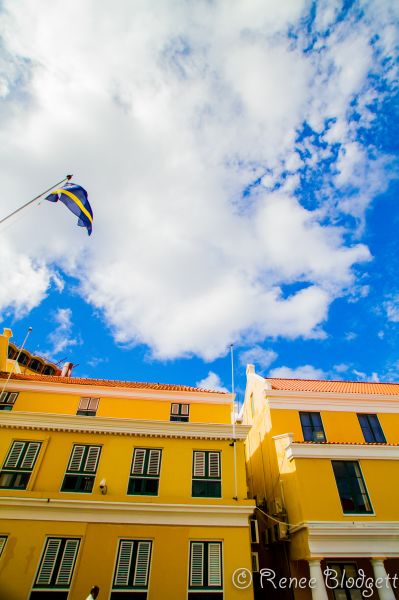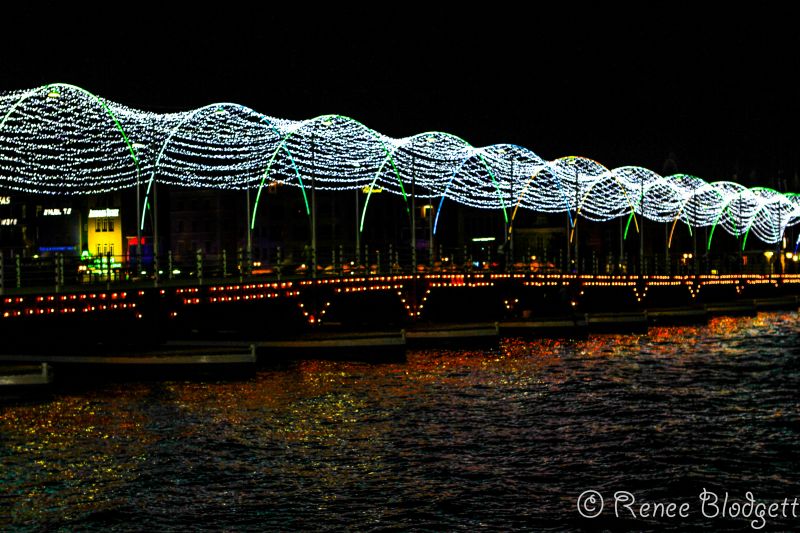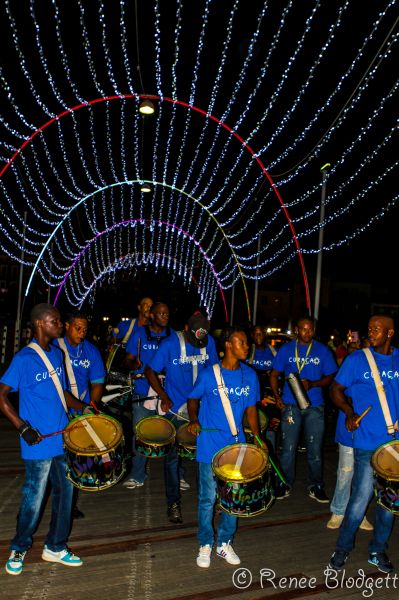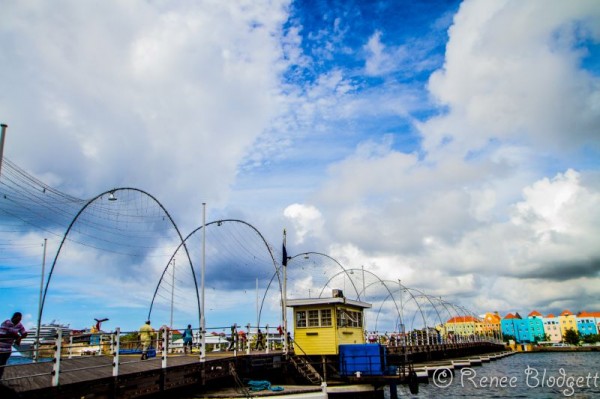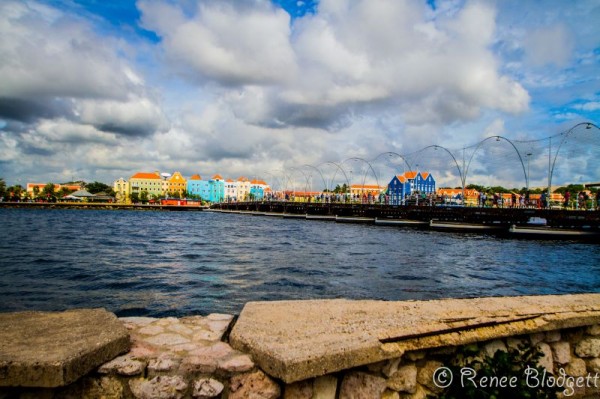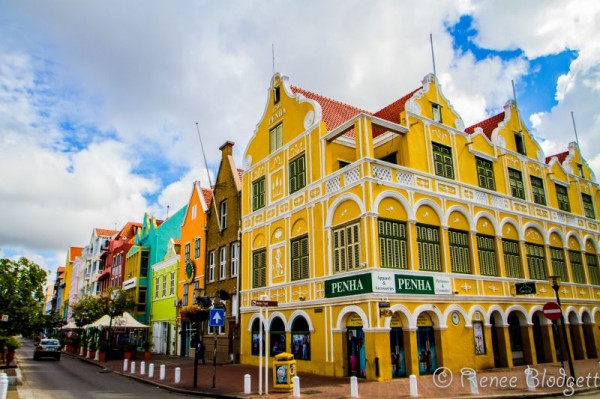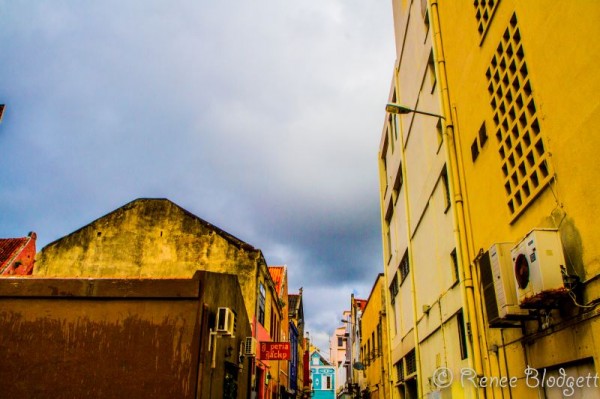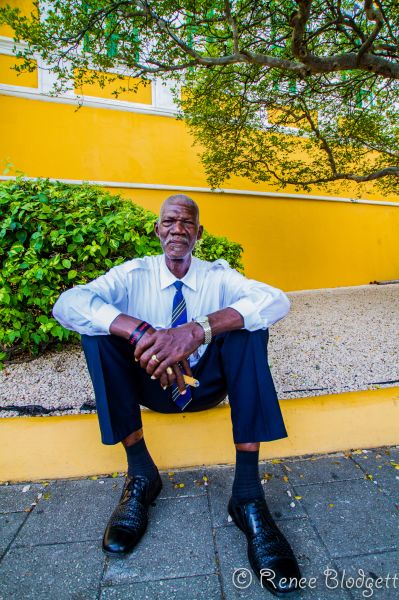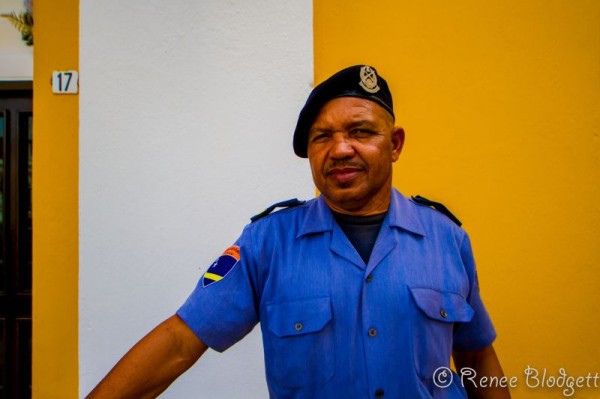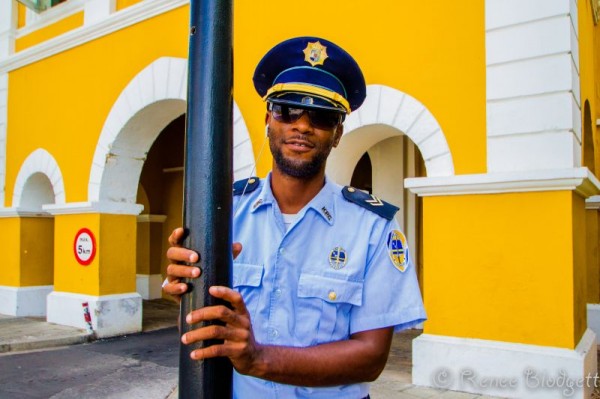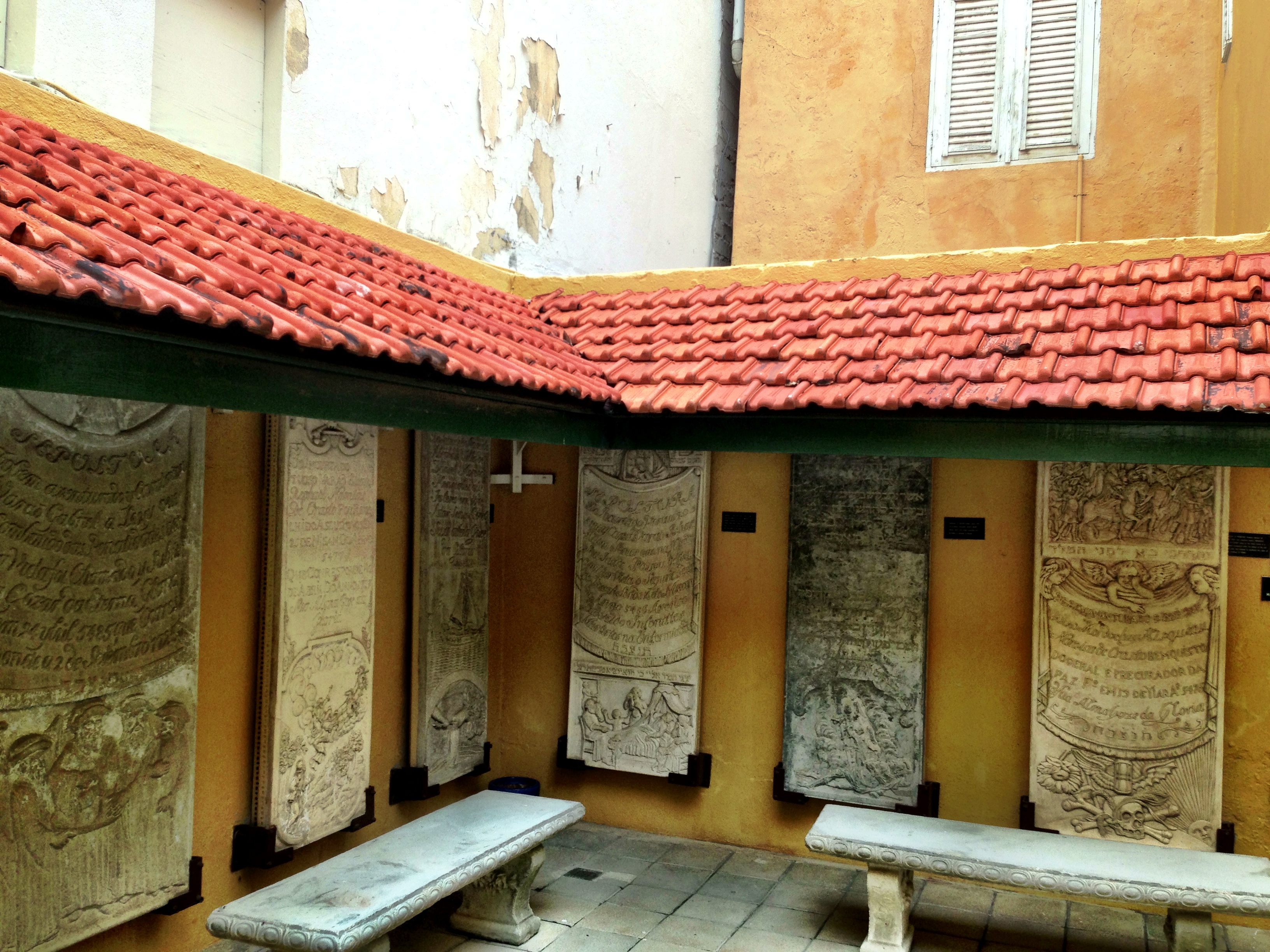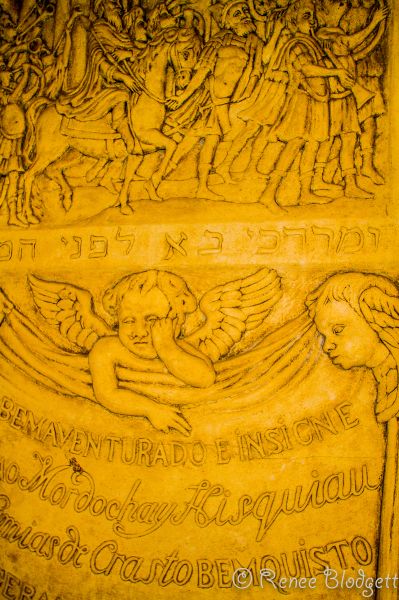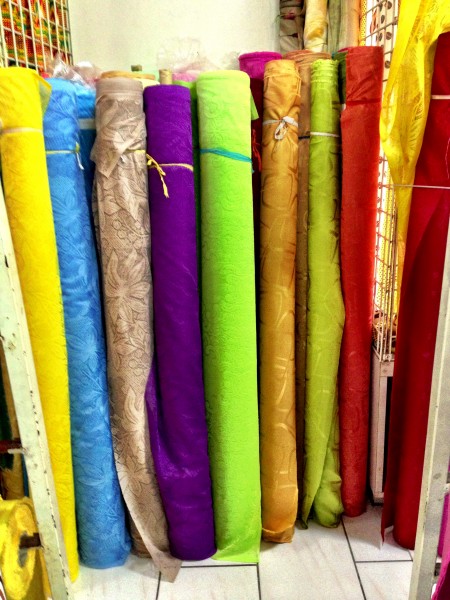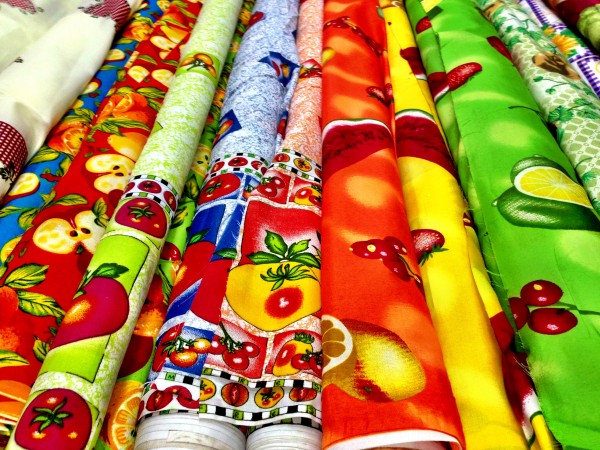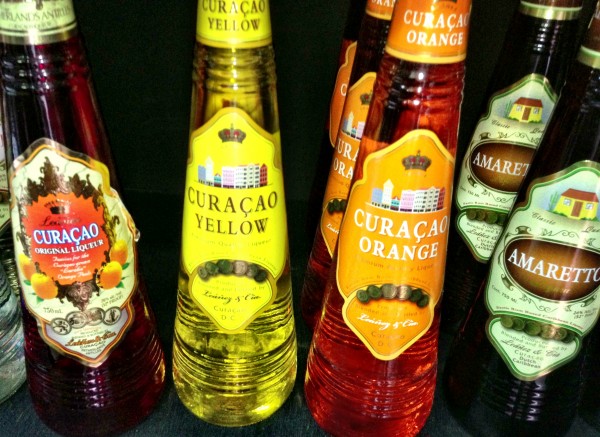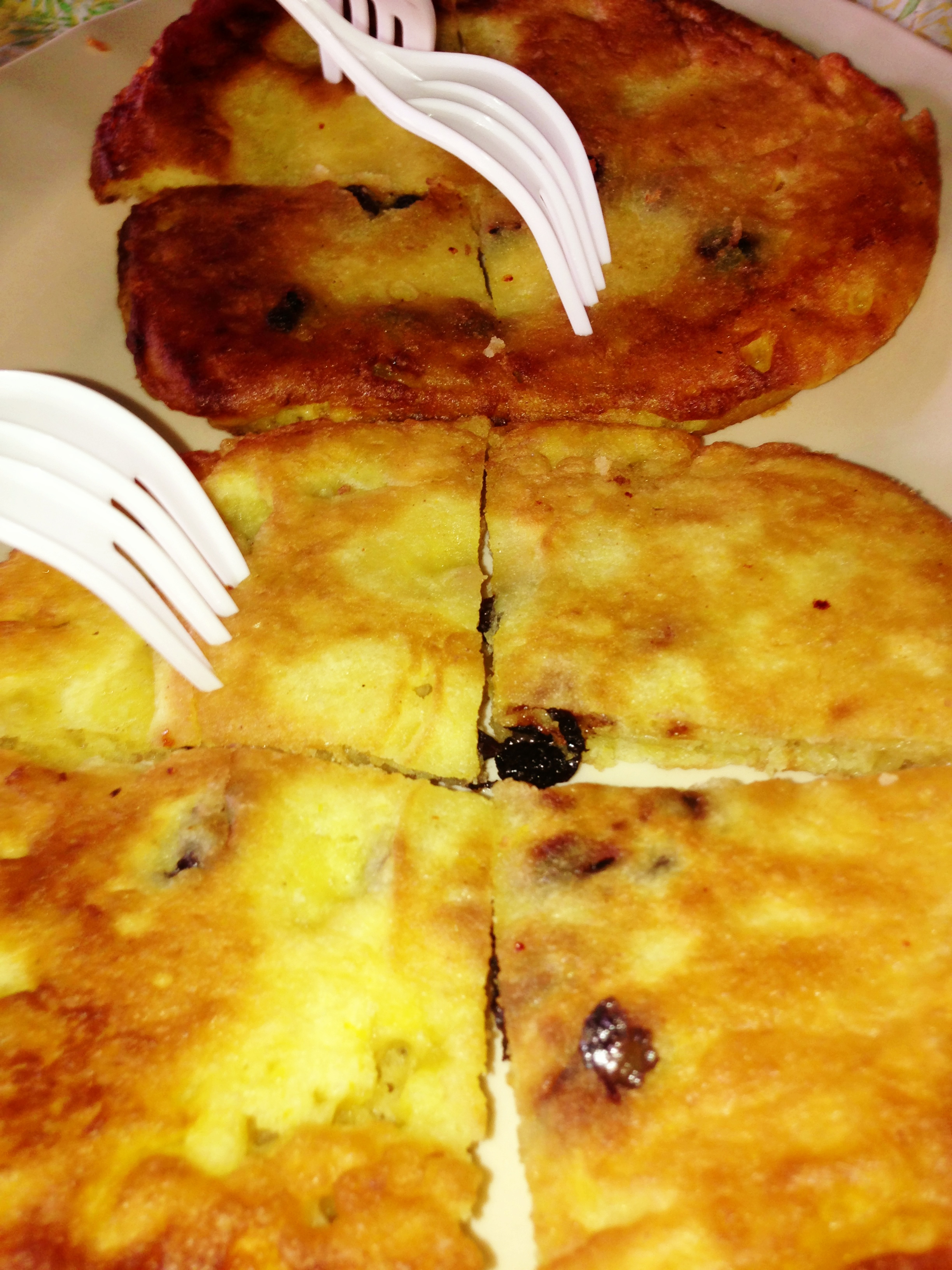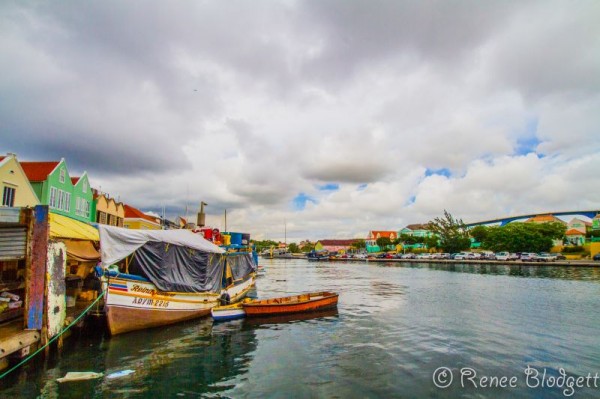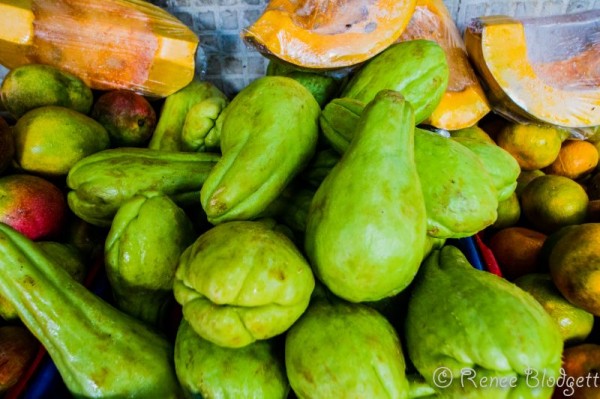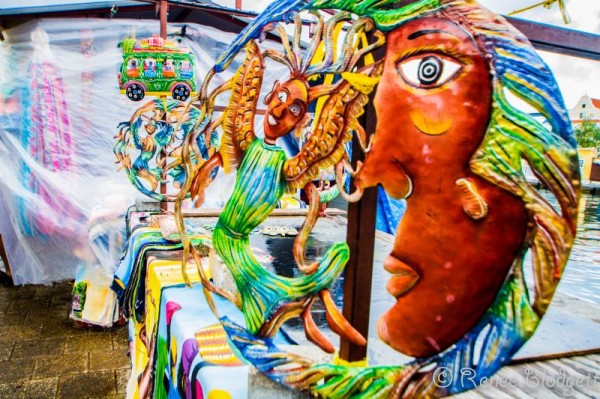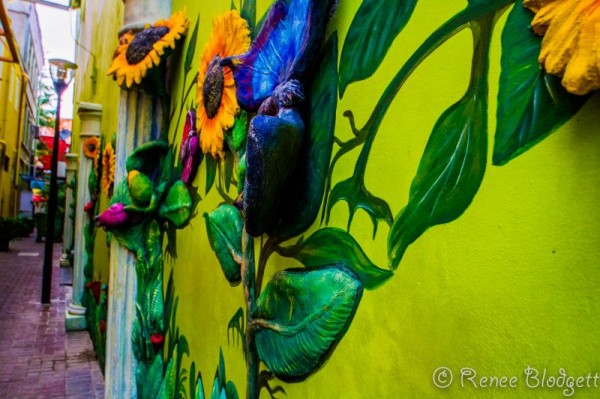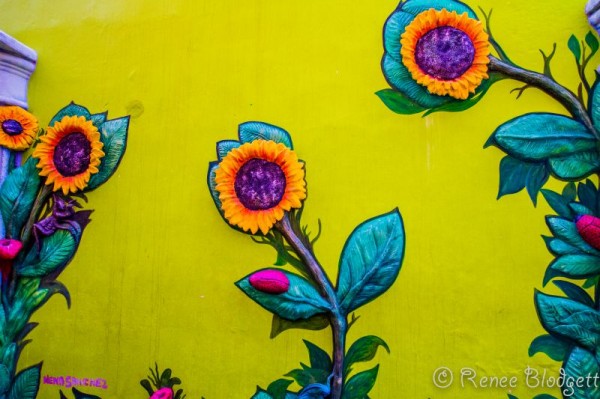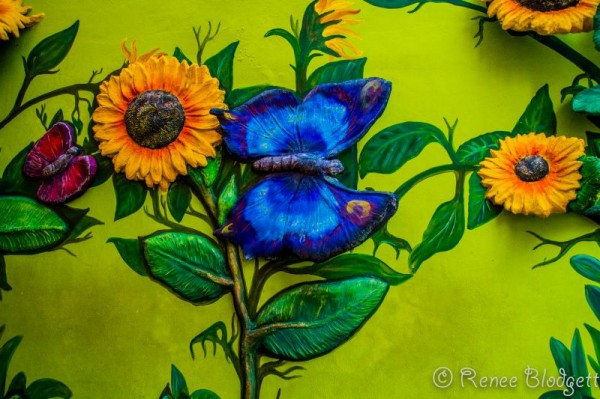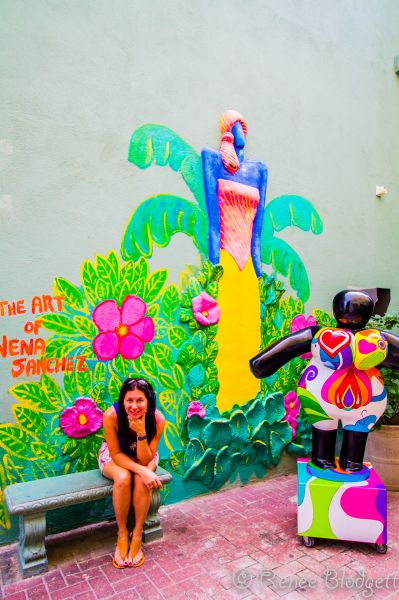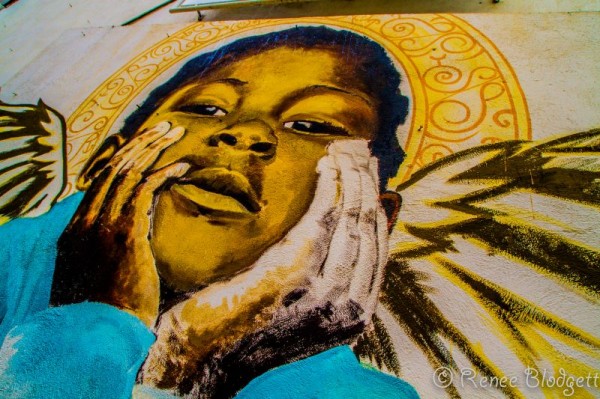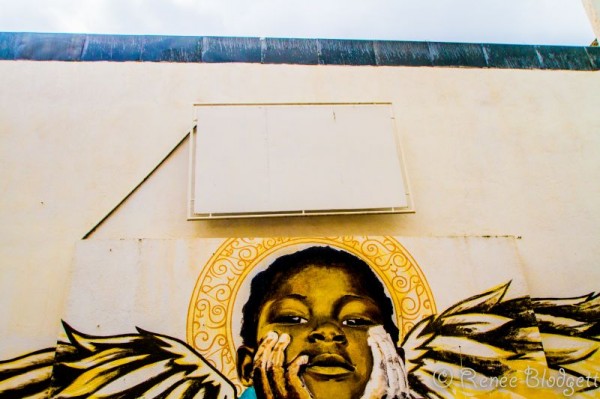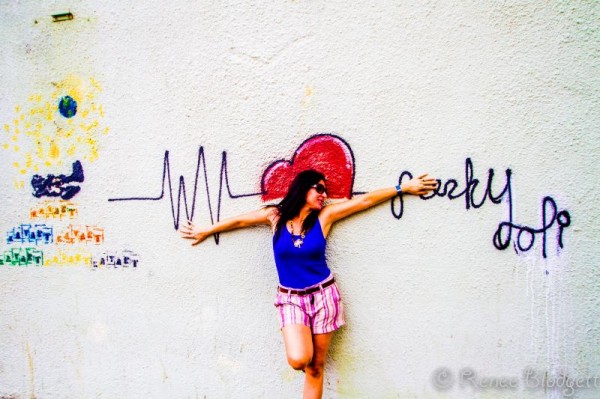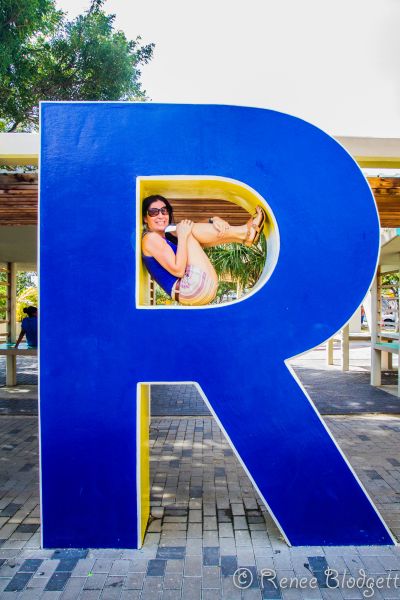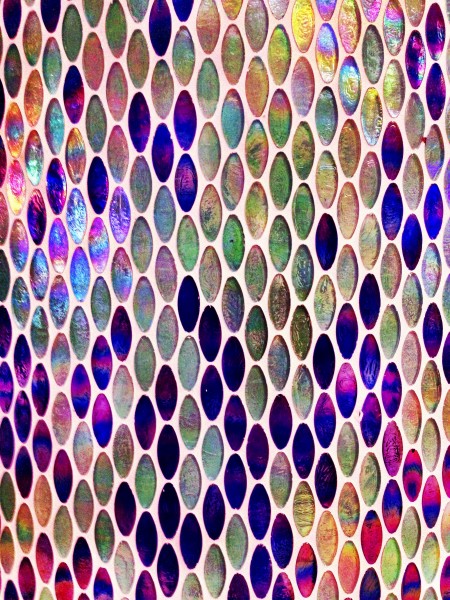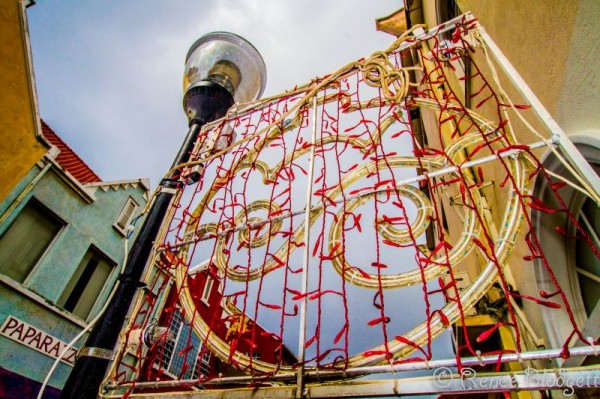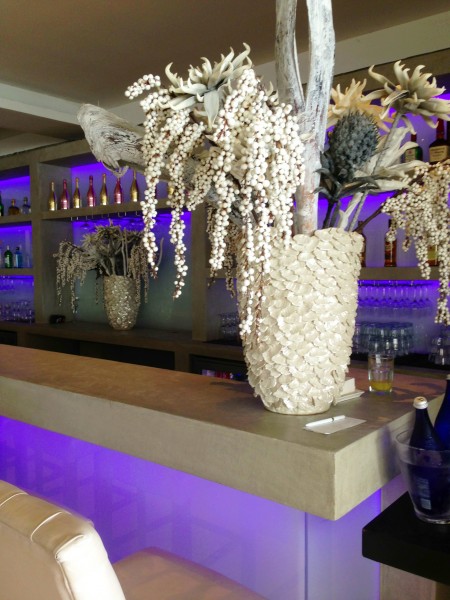Rain falls on me and then stops. It starts again 15 minutes later and along with several other locals, I huddle beneath one of the shop awnings – they all seem to have one as if they prepared for the frequent rain spurts a century ago when some of these shops were likely built.
Today they are far from old in appearance despite the fact that the brightly colored plastered blocks that attach shop after shop are mostly worn away. The buildings mostly have a Latin feel to them with their vivid coral, yellow and pink colors, yet somewhere along the way, you begin to see southern Europe, African and Dutch influences sporadically thrown in, one of the things that makes Curaçao so culturally diverse and unique.
Architecture everywhere throughout Willemstad, Curacao’s capital and only major city, is bright and colorful, including its government buildings.
The island’s architecture blends Dutch and Spanish influences and Willemstad is on the UNESCO world heritage list because of its many historic buildings. Given its size, most of what you want to see in Willemstad is easily walkable — from markets, shopping and restaurants, to historical sites.
I was in photography heaven as I approached the entrance to historical Fort Amsterdam, which was built in 1634 by the Dutch West India Company.
Apparently, it not only served as a military fort but also as the headquarters of the DWIC and was the main of eight forts on the island. Today, it serves as the seat of the government and governor of Curaçao.
Along Koningin Wilhelminiabrug, you’ll find even more incredible architecture to absorb. Here you’ll discover Willemstad’s Queen Emma bridge which is oozing with lights at night during the season.
Local boys played the drums for a crowd one evening as we gathered with other locals and tourism officials.
A toast and a celebration. And, among other surprises, Miss Curacao showed up.
Below is the bridge by day.
In the distance, you’ll see the abundance of colored houses, which is prevalent throughout Willemstad and Curacao. Below is a view of Handelskade Street, which runs alongside the river, another classic Dutch name. The buildings exude all things Dutch as you’ll note from the tall slender buildings you find throughout the Netherlands, especially Amsterdam where there’s limited space.
The cultural influences around me are far and wide. Afro-Caribbean meets Portuguese, Indonesian, Venezuelan and southern Africa all of which are infused with Dutch, which serves as one of the island’s two official languages, Papiamento being the other. While these may be the two core languages islanders speak, everyone seems to speak English well and Spanish can be heard frequently as you walk through the city, no grave surprise given its close proximity to Venezuela.
Colonial influences aside, each local I met and talked to seem to be wildly proud of their heritage yet even those who were not born in Curacao referred to themselves as locals. Saint Kitts and St. Martin were the two most common birthplaces I heard from islanders who now call Curacao their home.
Locals don’t tout diversity from surrounding islands alone however. This beautiful little island boasts cultural and historical heritage from Portugal, Africa and South America, as well as the Netherlands. I learn that Emlyn, one of our historical guides is a blend of Afro-Curacao and Jewish, not something I expected. Below, he waits for us inside the Mikve Israel-Emanuel Synagogue, the oldest working synagogue in the western hemisphere.
While Jews may be a very small percentage of locals, the synagogue has deep historical roots dating as far back as the 15th century. Who were the Jews on whom the Dutch were pinning their last hopes for the retention and development of their island possession in the faraway Caribbean island of Curacao?
Both the leader and his group came from Amsterdam, which at the time had a blossoming Jewish culture. That said, their roots were unmistakably in Spain and Portugal and their ancestors had lived there for centuries among the heathen, Moslem and Christian civilizations later on.
I find this fascinating and all the “why’s” a particular religion lands in a place you’d least expect.
According to our ever so fun driver Larry, who is both a minister and a rapper, roughly 75% of the population is Catholic, which makes a lot of sense given its location. There are of course Moslems, Hindus, Christians and Jews too he says with a smile. “What about you?” I ask him. His religion is closest to Pentecostal he says. Protestants make up only around 3.2% and Jehovah’s Witness and Evangelical both sit roughly at around 2%.
Because nearly everyone speaks English, it’s not hard to learn about people in more depth than perhaps in other parts of the world where language is more of a barrier.
Meandering through the streets has always been one of my favorite ways to discover a place and its people, stopping periodically along the way and asking questions or merely sitting in an outside cafe and observing behavior and activities for hours on end.
Given that it was a rainy day when I set out to explore, I kept walking. My journey brought me through Columbus Straat which apparently used to be called Muur Straat and then down the Breederstraat which translates to Broad Street or Broadway. As you might expect from Broadway, there is shopping, as well as on its adjoining streets through the city center.
Not unlike shops I recall from my numerous African visits, the windows shout all things cheap, vivid and bright, from materials, tablecloths, tapestries, loudly colored plastic tubs and popular kids imports like the gigantic Happy Girl in a bright pink box and Transformers games to plastic sandals, trinkets, batteries, watches, liquid soaps and the occasional fast food eatery.
You can also find Curaçao liquor throughout the city. I was told that there are only five colors of Curaçao — blue, which is the infamous drink nearly every westerner knows, green, yellow, clear and red — although, apparently they all have the same taste. Later on, I discovered orange as well but never managed to taste it. Other flavors for the sweet lovers out there include rum raisin, chocolate and coffee.
The old market, otherwise known as Plasa Bieu, is the best place to sample local food. Wildly popular in Curacao is chicken over rice, beans and goat stews. Also oh so yummy and very traditional is Tutu, which is ground up beans with sugar.
Says Larry as he smacks his lips, “sometimes they put pigs tail or cheese on top of the stews.” Cheese, I say looking astounded….but of course it makes sense given the Dutch influence. They tend to use a younger Gouda cheese I was told when I investigated a little further.
It wouldn’t be island culture if they didn’t have pancakes. I expected them to be loaded with bananas or papayas like most of the Caribbean and Africa, however a favorite here? Pumpkin. Yes, really.
For food and market lovers, you also need to know about the renowned Floating Market, where produce vendors bring fresh vegetables and fruit into the harbor on brightly colored boats. Sidewalks are lined with stalls overflowing with all your favorite tropical fruit, including papaya, mango, watermelon, plantains, oranges, bananas and melons. They also sell massive sized avocados, my go to staple both times I lived in Africa.
Tamarind is popular among locals as are lemons, limes, coconuts, pumpkins, cucumbers and enormous banana leaves. I tried the chayota fruit which looks a bit like a small papaya in green – a bit tart but worth a taste.
The vendors are from Venezuela, which despite the fact that the country is only forty miles away, the climate is much more arid than Curacao. A factoid I found surprising was that the produce you find in abundance at the Floating Market is not actually grown on island. Food lovers, be sure to read my Curacao Foodie post for fabulous photos and descriptions of classic local dishes.
One of the inside markets nearby had a stall with local remedies ranging from licorice, eucalyptus, tree bark and aloe, all in old fashioned pharmaceutical glass bottles with its name written in black marker. They are designed to treat such ailments as asthma, weak hearts, and constipation to menopause and the flu.
I assumed these vendors knew Dinah Veeris, the 75 year old local who studied natural herbal medicine for several years across 3 continents before returning to Curacao and opening her infamous Herb Farm which we had visited the day before. She runs it with her son and 97 year old mother who was instrumental in her learning the trade.
Like most Caribbean islands, stalls next to the floating market are bursting with artisan crafts. Fom long fabric purses you can sling over your shoulder, mini guitars, jewelry, wooden turtles, drums and paintings to colorful lizards, Curacao license plates, horns made out of bone, stuffed purple monkeys and wooden shakers, every stall seems to have something to tempt you. There were also giant suns for your garden, hammocks and hand carved boxes as well as beautiful artisan boxes and tea pots.
The main drag known as Shailio Caprileskade, houses the market stalls, which runs parallel to the heart of Willemstad, where you can find more traditional shops, such as electronics, housewares, lingerie and dress shops — sleeveless above the knee and laced with red glitter seemed to dominate. The large store at the main crossroads called BLING BLING didn’t go unnoticed.
Artisan crafts aren’t the only creativity you’ll find in Willemstad; art can be found on walls and in local shops. Below the art of the most renowned Curacao artist Nena Sanchez is plastered on walls inside the city. Born on the island, her art has been inspired by the bright colors of the Caribbean blue skies and turquoise waters ever since she was a child.
Her paintings of Dutch Caribbean scenes in a figurative style exude nothing short of joy. It’s impossible for your mood not to lift in the presence of her masterpieces. She is mostly self taught, learning painting as an autiodidact, where she experimented over the years with acrylic on different materials such as wood, canvas and papers. Outside of Curacao, her work can be found in Europe, North and South America.
There are plenty of murals on the walls as well which is common in most Latin American and Caribbean Island cultures.
In the central square sits the word CURACAO in blocked letters 25 or so feet high, so large, you can get lost in one of them if you wish. How could I resist? It was a great place to escape the rain for a few minutes and take it all in from a higher viewing point.
Below is another modern, creative piece of work I discovered on a pillar in of all places, the Renaissance Hotel lobby, which is located in the center of Willemstad.
While I collect art and usually leave with a piece of local creativity, I didn’t fill my suitcase on this Caribbean adventure, but not because there weren’t fun things to collect. Shopping was most certainly in the air — it was Christmas season after all — however I was more fixated on food and the glorious beaches and skies than art on this particular trip.
Just like in New York City and elsewhere in the world during December, traditional and tacky Christmas songs blared through the external speakers into the pedestrian brick walkways which connected one shopping street to another. And of course, the streets were decorated to celebrate the festive season.
I’d be remiss if I didn’t mention Chichi’s, which many people take home when they visit Curacao. Chichi is a sensual, well rounded Caribbean figure, which represents the smart, strong, happy and caring elder sister everyone deserves. She is handmade and hand painted in bright Caribbean colors by local craftsmen and painters.
Chichi is the Papiamentu word for ‘Big Sister’. She represents the eldest daughter of the family, who binds the family together in a loving and caring way. She is a much appreciated female role model in the Caribbean community of today and a very live part of its colorful heritage.
Rooted firmly in Caribbean culture, Chichi was created by Berlin born artist ‘Serena Janet Israel’. The Chichi is said to have characteristics of the famous Austrian ‘Venus of Willendorf’ sculpture , and the women created by Fernando Botero and Niki de Saint Phalle, but is absolutely a unique personality on her own. You can even make one in a workshop at Serena’s Art Factory.
Above, I discovered a giant sized Chichi not far outside the city center in an area called Jan Thiel, which is home to Curacao’s luxury shops, resorts and restaurants. In this upper class neighborhood is home to the Papagayo Beach Club, a gorgeous beach and the upscale Laman Spa, where you can get massages under a lovely secluded tent on the beach.
The beach club is ‘tres modern’ in style and has an infinity pool, sandy beach, a bar and a restaurant, where we had lunch one day. You definitely get the feeling that this is where the “beautiful people” hang out, locals and tourists alike.
After a leisurely lunch at the beach club, all I wanted to do was sit in one of the lounge chairs in the sand and watch the waves come in for several hours. Nothing more, nothing less.
What I love about the fact that this little island only has Willemstad as its main and only real city is that anything you’d want to explore is not far away from it, regardless of where you base yourself. If you opt to stay in or around Willemstad, you can capture the culture and food by night and within fifteen minutes, be in an area that feels so remote you’ll feel like you’ve found a little slice of heaven, whether its a luxury resort you’re after or a sandy beach with very few footprints marked in its lovely soft sand.
All photo credits Renee Blodgett.
Note: I was hosted by the Curacao Tourism Board for this trip but wasn’t paid to write this post nor expected to. All opinions expressed are entirely my own.

Renee Blodgett is the founder of We Blog the World. The site combines the magic of an online culture and travel magazine with a global blog network and has contributors from every continent in the world. Having lived in 10 countries and explored nearly 80, she is an avid traveler, and a lover, observer and participant in cultural diversity.
She is also the CEO and founder of Magic Sauce Media, a new media services consultancy focused on viral marketing, social media, branding, events and PR. For over 20 years, she has helped companies from 12 countries get traction in the market. Known for her global and organic approach to product and corporate launches, Renee practices what she pitches and as an active user of social media, she helps clients navigate digital waters from around the world. Renee has been blogging for over 16 years and regularly writes on her personal blog Down the Avenue, Huffington Post, BlogHer, We Blog the World and other sites. She was ranked #12 Social Media Influencer by Forbes Magazine and is listed as a new media influencer and game changer on various sites and books on the new media revolution. In 2013, she was listed as the 6th most influential woman in social media by Forbes Magazine on a Top 20 List.
Her passion for art, storytelling and photography led to the launch of Magic Sauce Photography, which is a visual extension of her writing, the result of which has led to producing six photo books: Galapagos Islands, London, South Africa, Rome, Urbanization and Ecuador.
Renee is also the co-founder of Traveling Geeks, an initiative that brings entrepreneurs, thought leaders, bloggers, creators, curators and influencers to other countries to share and learn from peers, governments, corporations, and the general public in order to educate, share, evaluate, and promote innovative technologies.

